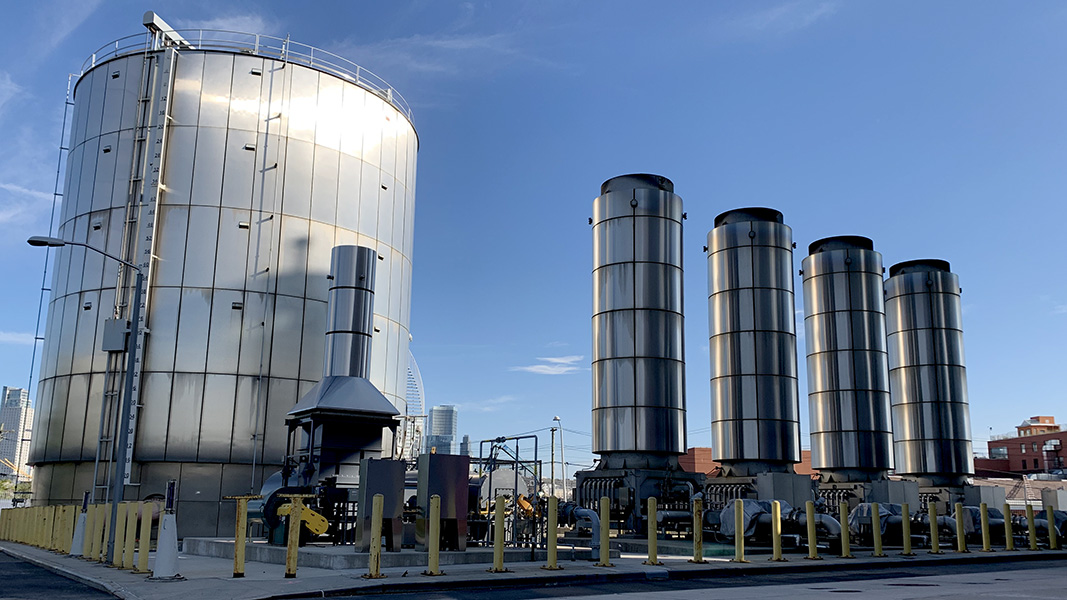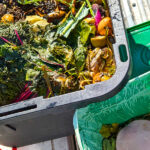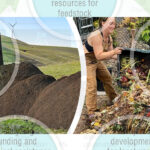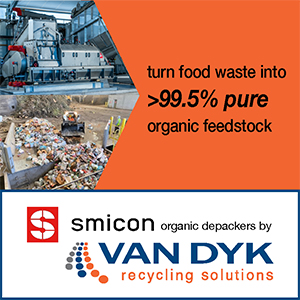Top: The New York City Department of Environmental Protection’s Newtown Creek codigestion facility in Brooklyn processes food waste and biosolids. Photo courtesy of Energy Vision
The American Biogas Council (ABC) released new data showing that over 1,200 municipal water resource recovery facilities (WRRFs) in the U.S. generate 7.3 billion kilowatt-hours (kWh) of electricity annually by capturing biogas from anaerobic digestion of wastewater biosolids. These WRRFs frequently use the biogas generated to power on-site operations, significantly easing electricity demand.
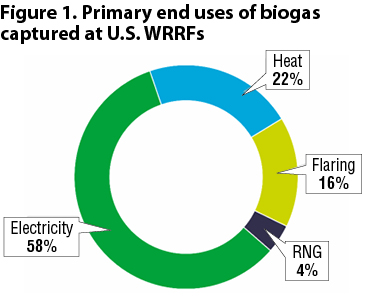
Graphic courtesy American Biogas Council
The extent of biogas capture at WWRFs across the U.S. has been largely unknown, with the last in-depth nationwide research into the topic being conducted around 10 years ago, according to ABC, prompting the organization to address this knowledge gap at the start of 2024. The analysis, based on data from more than 5,000 facilities that treat at least one million gallons per day (1 MGD) of wastewater, found that only one-quarter have incorporated biogas systems into their treatment process. “If all these 5,000 facilities with a viable average daily flow of >1 MGD — processing in the region of 20 to 30 billion gallons per day of wastewater in total — converted their biosolids into renewable energy, the potential amount of biogas captured annually would increase to 171.8 billion cubic feet, enough to produce electricity for 1.3 million U.S. households every year,” notes Ian Taylor, ABC’s Data & Analysis Manager.
Compared to other sectors, perhaps the longevity of the wastewater sector is the most striking, adds Taylor, with several WRRFs tracing AD activity back to the 1920s and still operating today. According to ABC’s research, the 1960-1990 period stands out for the most WRRFs commissioning AD and biogas capture systems for the first time — over 100 new systems being added in each decade. Historically, AD systems have been used for a very simplistic reason: to reduce the volume of solids that WWRFs have to manage once they are separated from sewage water (digesting the bioisolids reduces volume by about 50%). Traditionally, “facilities usually gave little or no attention to the energy value of the biogas they captured during that process,” says Taylor.
Fast forwarding to today, WRRFs surveyed utilize 80% of the biogas captured for energy. ABC’s report says 58% produce electricity and 22% produce heat (Figure 1). Only 4% of WRRFs upgrade biogas to renewable natural gas (RNG), a lower rate than other biogas sectors. The flaring of biogas at WWRFs as the primary method of preventing methane emissions, is undertaken at 16% of the sites surveyed to date (the majority of these were developed before 1980). ABC’s findings highlight a significant opportunity for municipalities to expand biogas infrastructure, turning wastewater into a reliable, renewable energy source that supports grid resilience and sustainability.


